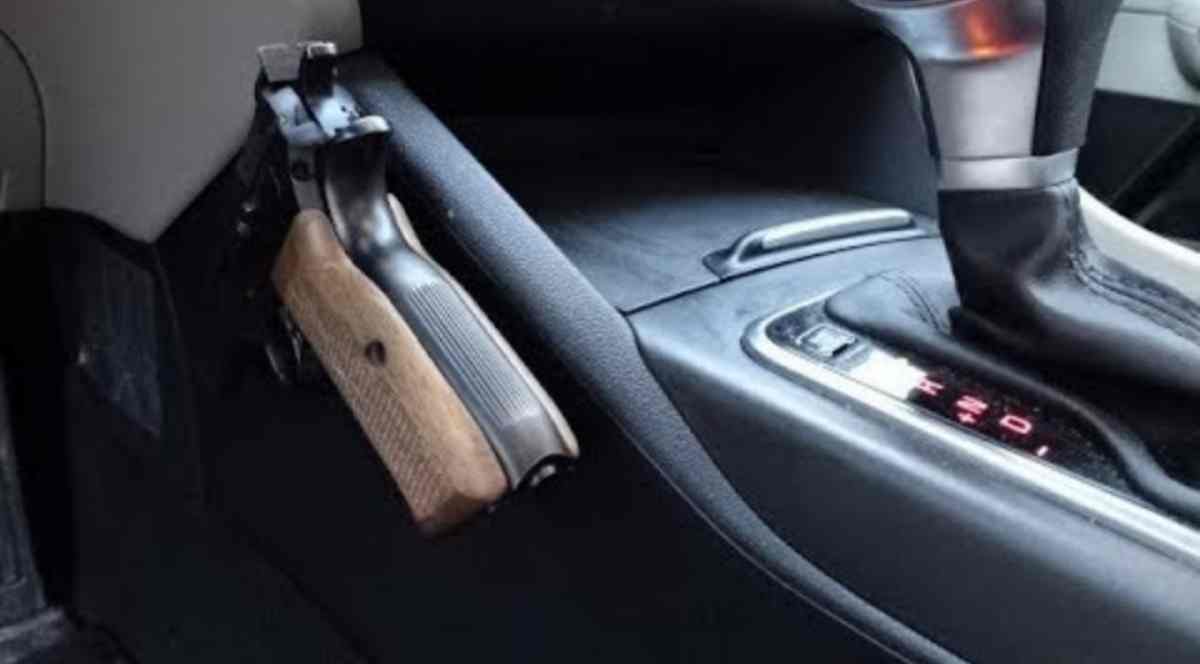How long does it take to bleed brakes? Well, this question depends on if you do it yourself or contact a professional, as well as manually or with a vacuum pump.
It takes an average of 30 minutes to bleed brakes in a car. If you are inexperienced, and without a bleeding kit, it should take within an hour to bleed. A mechanic would spend less time, perhaps, 20-25 minutes if there are no leaks.
Brake bleeding ensures the release of air bubbles from the brakes. If you do not bleed the brakes, you cannot get them to work properly.
And unlike what you may think, the bleeding process may be a bit more complicated than it seems.
Bleeding brakes: what does it mean?
Bleeding brakes is the process of clearing the air bubbles gradually forming in the brake system in cars with a hydraulic braking system.
Your vehicle may use a hydraulic braking system, so it is important that you know how to bleed the brakes, which is part of the maintenance menu for your safety.
Forget that we mentioned earlier that bleeding your brakes can be complicated, it is not if you know what you are doing – the knowledge, and trying it out yourself, which eventually becomes ‘experience’.
You do not bleed the brakes frequently because it takes some time for air bubbles to develop in the hydraulic fluid.
And, by the way, air bubbles reduce the braking system’s effectiveness, stopping it from operating effectively.
Readers read: When your car battery won’t charge, reasons

How long does it take to bleed brakes?
Manually
If done manually without any special tool but you are handy with car repairs, it takes about 30 minutes to bleed brakes, getting rid of air bubbles from all 4 brakes.
If you do not have the experience repairing automobiles, it should take between 10-15 minutes per wheel, averaging about 50 minutes, an estimated 20 minutes more than if you had the experience and right equipment.
We could just say that as a non-professional without the experience, you should be done bleeding brakes within one hour. Just make sure that there is no fluid on you or any equipment.
Vacuum pump
If you use a vacuum pump, you will not have to step on the brake pedal. A vacuum pump also helps when you have nobody to assist with the process.
Using a vacuum pump is not any faster, so it could still take you 30 minutes or even an hour long. A vacuum pump really helps to complete the bleeding neatly without making a mess. If you are getting a vacuum pump just to bleed brakes, then it might not be a good idea since you only bleed after some months or years.
A mechanic
A mechanic may completely bleed the brakes in 20 minutes if there are no setbacks. Nonetheless, give yourself up to 30 minutes of wait time.
You could have a mechanic do the bleeding. Besides, they have the experience and know how to bleed brakes professionally.
It may take the mechanic a shorter time because they do not have to plan the equipment or safety precautions – they probably already have all it takes in the shop.
Mechanics will use a power hoist to lift your vehicle before powering the bleeder to bleed the brakes.
Read also: Backflushing a radiator
How to bleed your car brakes
To correctly bleed brakes, follow the steps below:
-
Prepare the materials
Gather the following materials to bleed the brakes of your car:
- Disposable bottle
- Bleed block
- A can of brake cleaner fluid
- A clear plastic tubing
- One car lift or four jack stands
- Bleed kit
- Combination wrench
- Brake cleaner
- Paper towel
First, park the car where you can move comfortably around it. If your driveway is spacious, then it should be a perfect place to park the car. The next thing is to get the bleeding tools closer to you.
A brake-free bleed screw remover is the tool you need to remove the bleeder screw. Check your local hardware store, or get a bleed kit to meet your needs.
A disposable bottle or vessel is important to catch the draining fluid so that no hydraulic fluid flows across your driveway.
A hoist or car lift is also needed to hoist your vehicle before you begin the bleeding process. You can use 4 jacks or a hoist to elevate the car from the ground.
Buy a new brake fluid to replace the old fluid. Check your manufacturer’s recommendations to get the best deal.
If you have a vacuum pump brake bleeding tool, your bleeding should be even easier and less messy.
-
Find the bleeder screw
First, get on your protective gear. Skin contact with brake fluid can irritate the eye and skin. Moreover, brake fluid is corrosive, and you do not want to spill your engine or surrounding area.
Speaking of the bleeder screw, it is typically located underneath the brake caliper assembly. It could be made with brass or any other material, depending on the manufacturer.
-
Drain the hydraulic fluids
Commence the bleeding process by removing the hydraulic fluids in the brake line, every bit of it.
Before you lose the brake line screw, you need a disposable bottle or vessel beneath it to hold most of the fluid. This may not stop the fluid from dripping to other parts of the vehicle, away from the vessel.
Allow some time for the fluid to drain completely, this may take a while.
If you bought a bleeder kit, you should find a syringe in it. Use the syringe to suck the residual air from the brake.
If you have no bleeding kit, get a plastic bottle and a hose and suck the residual air.
-
Pump your brakes
You may need some assistance to pump your brakes although it is not necessary, except that it makes the fluid draining job neater.
Your assistant’s job is to press the brake in the vehicle firmly. While the person firmly presses down the brake, open the bleeder screw. The brake fluid will squirt out with air as the person holds down the brake. This process should be repeated until only brake fluid comes out and not air.
Close the bleeder screw when there is no more air inside.
-
Refill the fluid
Replace the screw and refill the brake fluid. If you drained the entire brake fluid, fill all the fluid in there.
-
Bleed other wheels with this procedure
The same procedure applies to the remaining four wheels.
You may start bleeding brakes from the passenger rear onto the driver’s rear before the passenger and driver’s front wheels.
Ensure to wipe off the fluid immediately if it drips to any metal or unprotected surfaces on your car to prevent it from eating through.
We find Mike’s video relevant if you need video assistance:
Read this: Can you tell when freon is running low?
When to bleed the brakes
Spongy brakes
If your vehicle brake feels spongy when you press it, there could be air bubbles lurking in the hydraulic fluid. This means that instead of compressing a fluid, you are compressing air bubbles.
Leaks
If you detect leaks, the hydraulic fluid could be draining. Unfortunately, this leak is a gateway for air bubbles to build up in the fluid. You also want to check for leaks when replacing the fluid.
Unusual deceleration
Also, your cat may take longer to stop, which is unusual. The deceleration will not be uniform, which is a sign that you have air bubbles residing in the hydraulic fluid.
Any amount of hydraulic fluid you have in the system will get contaminated gradually if you do not lose the brakes.
And if you carry out brake repairs such as replacing brake rotors or pads, it exposes the hydraulic fluid to air trapped in the fluid to form bubbles. Perhaps, you want to bleed your car brakes during brake repairs.
Read also: Fix your clogged radiator before leaving home
FAQs
Will brakes eventually bleed themselves?
Brakes will not eventually bleed themselves. When you notice bleeding signs such as the brake pedal getting softer or a reduction in vehicle stopping time, then it is time to bleed the brakes. It is just one of the many maintenance practices to keep the car safe.
Do you bleed brakes with car running?
You do not bleed brakes with the car running. Turn off the engine and elevate the car with hoist or jacks before you bleed the brakes. Drain and pump the brakes until you feel solid pedals to squirt out air bubbles.
How much does it cost to power bleed brakes?
It costs about 82 to 102 dollars to bleed car brakes. This estimate does not include taxes and extra fees and does not factor in your location and type of car.
Do I need to bleed all 4 brakes?
You have to bleed all 4 brake lines. Nonetheless, if you open an independent brake line, you may not have to bleed all 4. Do not also use different fluids for all 4 brakes.
How often should you bleed brakes?
Automotive experts recommend bleeding brakes every 2 to 3 years. You can bleed the brakes yourself but a licensed mechanic may do better, including taking the time to detect leaks before refilling the fluid.


